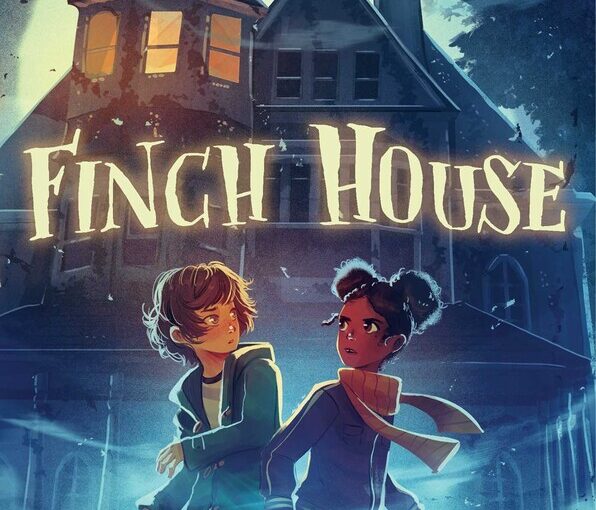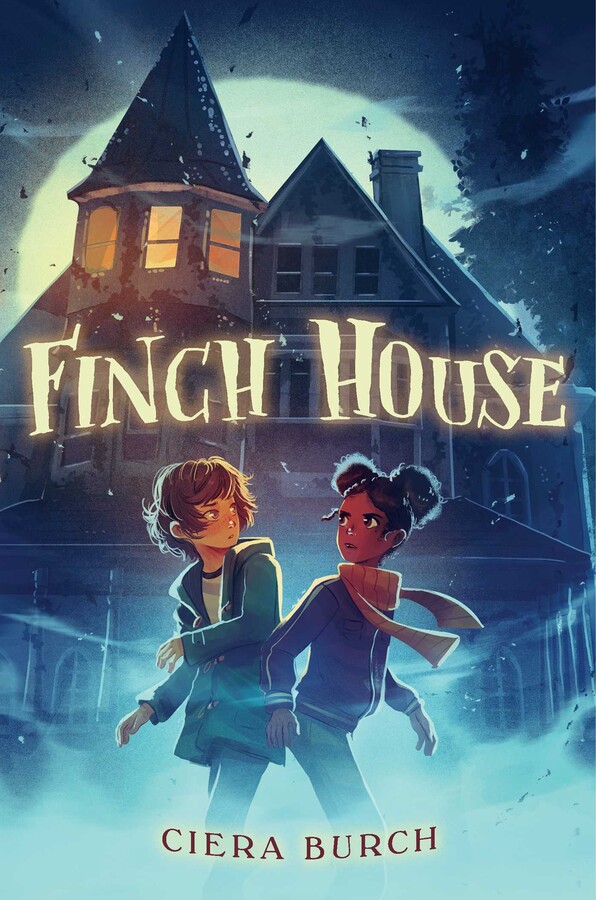The other year I read The Thief of Always to a group of fifth-grade students. I personally had read some Clive Barker before and wasn’t familiar with this dark fantasy release that’s come to be a modern-day classic. What makes that book so awesome is what makes Finch House, a really great book for those middle-elementary school through lower middle-school readers. It’s age-appropriate scary, which is a really tough characteristic to nail down because if it’s too soft then the young readers will see it as babyish and if it’s too graphic then it won’t be attractive to those readers at all.
Finch House has a soft sense of dread and mystery that crawls throughout its quickly-paced 18 chapters. It builds upon tropes and urban legends that any kid can understand and relate to. There is the mysterious house at the end of the street that plays into so many misunderstandings and creepy knockoffs that it’s somewhat of a cliché. Finch House is dealt those same cards, yet it plays them in a manner that deals more with the heart and emotions, than gory characters or things that bump in the darkness.
Micah is a typical 11-year-old girl. She’s just about to move out of her grandfather’s house and packing up boxes that’ll cart off all of her stuff. To take a break from this monotonous process, she decides to take a bike ride which goes right past the mysterious house that every street has. The only difference is that this time, the usually abandoned house has a boy, about her age playing in front of it. He’s a ghost, that’s what you’re immediately thinking, it’s what I thought too, but it isn’t, he’s a real, physical person.
Since this kid is a real person and the house is occupied that must surely mean that her grandfather’s ultimatum of never going into Finch house was null and void, right? After playing with Theo for a bit, she accepts his kind offer to take a very brief tour of the house, only to find her grandfather outside of the house when she leaves the front door. He’s not happy, she’s embarrassed and they have a heart-to-heart talk when they get home about listening and doing as they’re asked.
The following day she can’t find Poppop, and that’s very unlike him. Her sixth sense leads her back to Finch house where she’s sucked into a dark mirror world with a creepy kid. This kid is about her age, and seems friendly at first, but lets her know that she’s unable leave. The house then takes on its own personality, talking to her at times and making Micah realize that it’s more akin to a Venus Flytrap than a house that folks can call home.
Creating age-appropriate scary that ages eight through fourteen want to read is challenging. Finch House succeeds in creating mglit that makes a world where darkness and mystery hold the upper hand, while balancing the positive light that Micah brings to it. As the house, the creepy kid and Micah figure out their relationship the book and what brought them together, the book takes on a more grounded and familial aspect. This is where it’ll lose interest for some readers who want to the book to be more spectral in nature.
However, hang with it and give the book a chance to tell its more emotional story. The dark corners that would otherwise be scary take on a more mysterious tone. What started out as a ghost story evolves into a more heartfelt journey, but it does still have an undercurrent of spooky. Ultimately, Finch House is more about the visage of unknown things that go bump in the night, rather than the gory or a scary haunting that young readers might think that they crave. It’s a book that won’t be in the same classic category as the first one that we thought of, but is leagues better than the horrible movie Monster House that some might think of, and will be a great mglit book that starts with darkness and builds on that.
Finch House is by Ciera Birch and is available on Margaret K. McElderry Books, an imprint of Simon & Schuster.
There are affiliate links in this post.






 Facebook
Facebook Twitter
Twitter Flickr
Flickr GooglePlus
GooglePlus Youtube
Youtube